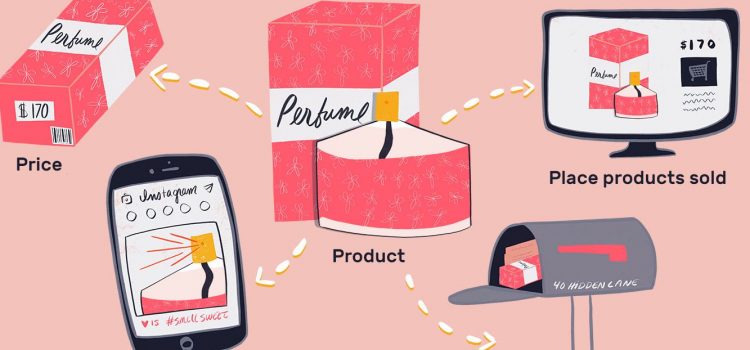According to statistics, approximately 30 thousand products are launched every year. Most of them fail, though. Today we’ll try to find out the ways how to avoid this failure and, most importantly, let your product actually make a difference.
The most crucial thing for any kind of business is the product or service they are offering to their customer. It is a no-brainer that the entrepreneur who is launching a low-quality product will inevitably fail. Nevertheless, even launches of top-notch products or services sometimes don’t live up to expectations and, eventually, become unprofitable and leave the market. This is the reason why every beginner entrepreneur should pay enough attention to building a detailed product marketing strategy.
A high-quality product marketing strategy is extremely beneficial to every sort of business, since it gives one the opportunity to reach out their ideal audience and convert it into customer. A PM strategy consists of 4 key components, i.e. Positioning, Messaging, Pricing and Team alignment. In this article we will cast light on the ways how to build up an ideal PM strategy, based on these key components.
What is a Product Marketing Strategy?
A PM strategy is basically a roadmap which helps you to identify your ideal audience, reach them out and build their trust to your brand so that they could buy your product and come back to you in the future. It integrates with the product life cycle (PLC), based on strong buyer intelligence.
Product Marketing VS Product Management
While talking about PM strategy, make sure that you know the subtle difference between Product Marketing and Product Management. They both are extremely relevant and crucial for defining the product price, doing the research and further product development. The ways of differentiating between them are put into quite a simplistic, yet clarifying, table.
Steps to be Taken to Build a High-quality PM Strategy
In this article we would like to provide you with a direct strategy on how to build a perfectly structured and detailed Product Marketing strategy. So, let’s not beat around the bush and take following steps:
1. Validate the demand
It might sound as an easier-said-than-done matter, however it will become blindingly obvious how relevant your product is in modern world, if you take a look at such services as Data.gov (the US market) and Eurostat (European market). Apart from that, don’t forget to do a competitive and social media research. Your potential competitors’ LinkedIn accounts can speak volumes!
Most importantly, pay attention to the customers you have already provided your services for. Ask them for a short feedback, try to interview them on their pain points, goals which they could achieve by purchasing your product, pricing expectations about it and their psychographic traits. These will be crucial for the next step, since it will help you to picture an ideal customer.
It would be a great commencement for any product launch to do a Minimum Viable Product (MVP) testing and gather some feedback on it. An MVP can help your clients achieve only one of several goals, in contrast to your eventual product, since what you are aiming at now is to validate the demand and find out more about your potential customers.
2. Know your target audience in person
Believe it or not, 58% of purchasers claim to switch companies, provided their needs are not met. So, every entrepreneur should dive deeper into what they know about their TA and know as much as possible about their behavioral drivers (their goals and ambitions related to your product), obstacles (their hesitations and concerns about it) and mindset (the preconceived notions, which your potential client has).
3. Work on product positioning and messaging
What sells a product best is a compelling narrative. Why not to improve it while promoting a high-quality service? Remember about 4Ps in product positioning, which include Product, Price, Promotion and Place. Being an entrepreneur, you need to have a clear notion about them concerning your product.
While working on your image in social media, include following points:
- Unique Selling Proposition (the way you are different from your competitors);
- Target audience (look at step 2);
- Brand story (convey your ideas, values through posts in your account, discuss the way you came up with your USP);
- Messaging strategy guidelines.
All in all, be the brand who speaks to their customers, testing messaging techniques continually.
4. Set SMART goals
An entrepreneur can measure the extent to which their product launch is successful only by looking at the results of the campaign. So, try not to build castles on the sand and set Specific, Measurable, Achievable, Relevant and Time-based goals beforehand in such spheres as sales (User Acquisition), customer satisfaction (Retention) and brand awareness.
5. Align your team
A team is the key to the success of a launch compaign, so make sure that every person in your company know the following points in marketing your product/ service:
- Product features and benefits;
- Customer pain points;
- Positioning and messaging;
- Buyer personas;
- Product goals;
- Pricing strategy.
6. Price your product, based on its value.
Again let us brush up on statistics. 70% of people claim that price is one of the most important factors for purchasing a product. Create your pricing strategy only after thoroughly analyzing your buyer personas and surveying existing customers.
Conclusion
Creating a detailed and thorough Product Marketing campaign might seem quite time-consuming and intellectually demanding. Nevertheless, it does pay off, and the results of such a product launch speak volumes! We hope that our article will help you build a successful PM strategy, which will bring great results!

